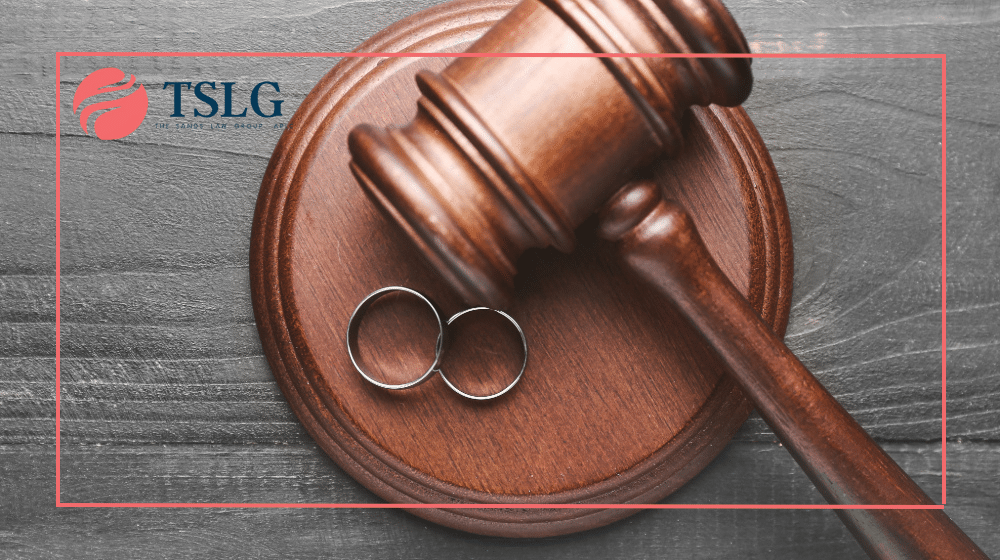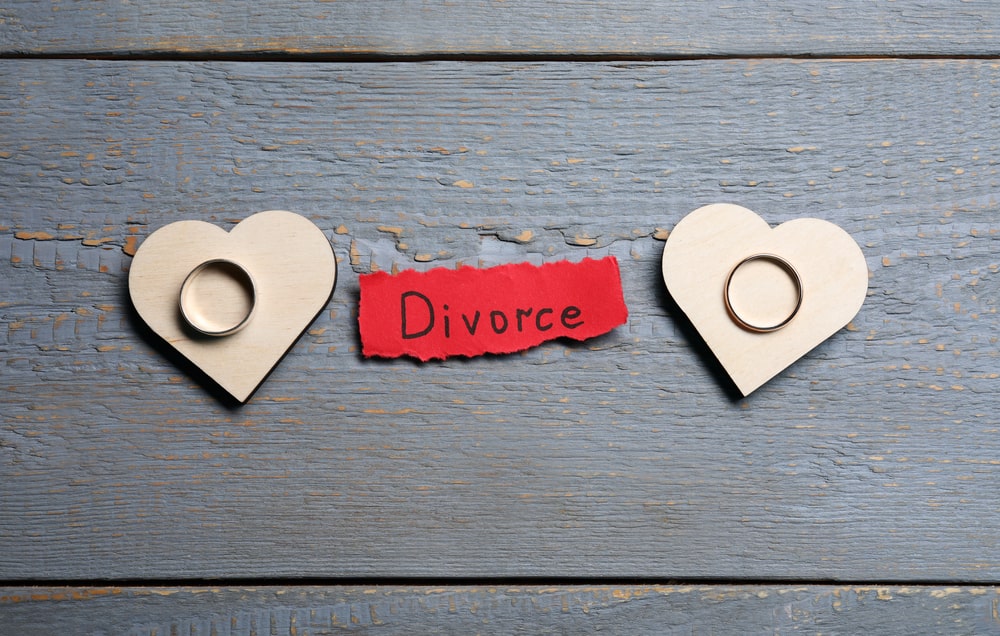Divorce Attorneys Los Angeles

Compassionate Divorce Attorneys For Los Angeles Families
Going through a divorce can be one of the most emotionally challenging and legally complex times in your life. Whether your separation is amicable or contested, issues like child custody, spousal support, and division of assets can quickly become overwhelming without experienced legal guidance.
At The Sands Law Group, APLC, we are trusted divorce lawyers in Los Angeles, California, committed to helping families resolve their legal matters with clarity, compassion, and confidence. Our goal is to minimize conflict, protect your interests, and guide you toward the best possible outcome for your future.
With deep experience in California divorce law, our multilingual legal team offers personalized representation tailored to your unique circumstances. We proudly serve clients in English, Spanish, French, Hebrew, and Arabic, ensuring every family gets the support they need, no matter their background.
Whether you’re facing a high-conflict divorce or seeking a peaceful, uncontested resolution, our attorneys will walk you through every step of the process. We focus on efficient, cost-effective strategies that prioritize your family’s well-being.
Call us today at (213) 788-4412 or contact us online for a confidential consultation with an experienced & compassionate Los Angeles divorce attorney at The Sands Law Group, APLC, you can trust.
Divorce vs. Legal Separation in Los Angeles

In California, both divorce and legal separation are legal processes that allow spouses to resolve important family law matters, such as custody, support, and property division, but they result in different legal outcomes. Understanding the key differences between these two options can help you make the best decision for your circumstances.
At The Sands Law Group, APLC, our experienced Los Angeles divorce attorneys help clients choose the right path forward, whether that means filing for divorce or pursuing legal separation with specific protections in place.
What Is Divorce?
A divorce, also known as a dissolution of marriage, is the legal termination of a marital relationship. Once a divorce is finalized in California, the marriage is officially ended, and both spouses are legally single and free to remarry.
During the divorce process, the court will resolve all relevant issues, including:
- Division of marital assets and debts (according to California’s community property laws)
- Spousal support (also known as alimony)
- Child custody and visitation (based on the best interests of the child)
- Child support (calculated using California’s guideline formula)
California also requires a mandatory six-month waiting period from the time the divorce petition is served before the divorce can be finalized. Once complete, the court issues a Judgment of Dissolution, officially ending the legal bond between the parties.
What Is Legal Separation?
Legal separation allows couples to live apart and make legally binding arrangements without officially ending the marriage. The court can still issue orders related to:
- Division of property and debts
- Spousal support
- Child custody and visitation
- Child support obligations
However, at the end of a legal separation, you are still legally married. This means neither spouse can remarry unless they later pursue a divorce.
Why Choose Legal Separation Over Divorce?
Legal separation may be the better choice for couples who:
- Have religious or cultural reasons for avoiding divorce
- Want to retain certain marital benefits (such as health insurance, military benefits, or tax advantages)
- Are unsure about permanently ending the marriage but want to live apart
- Are pursuing counseling, reconciliation, or a trial separation before deciding on divorce
Legal separation also provides the same level of judicial oversight and protection as a divorce, allowing couples to establish fair financial and parenting arrangements while remaining married in the eyes of the law.
Can a Legal Separation be Converted to Divorce in California?
Yes. If a couple that is legally separated later decides to end the marriage, the legal separation can typically be converted into a divorce by filing a request with the court. This conversion avoids restarting the legal process from scratch and can streamline the transition to full dissolution.
Find the Right Legal Path with The Sands Law Group
Whether you are considering legal separation or divorce, it’s important to understand how each option aligns with your personal, financial, and family goals. At The Sands Law Group, APLC, our compassionate and experienced divorce attorneys in Los Angeles are here to help you make informed decisions and protect your best interests every step of the way.
Benefits of Hiring a Los Angeles Divorce Lawyer
Even in the most cooperative separations, filing for divorce in California can quickly become complicated, especially when issues like child custody, community property, and spousal support are involved. Without professional legal guidance, you may risk overlooking critical rights or making decisions that affect your financial and emotional future.
At The Sands Law Group, APLC, our experienced Los Angeles divorce attorneys guide clients through every step of the divorce process with clarity, care, and strategic focus. Whether your divorce is uncontested or highly contested, we help you make informed decisions that protect your long-term interests.
The following is a list of benefits of acquiring legal representation in a California divorce:
Understand and Protect Your Legal Rights
California’s community property laws and custody rules are complex. A knowledgeable divorce lawyer ensures your rights are clearly understood and aggressively protected, whether through settlement negotiations or courtroom litigation.
Strategic Legal Advice Based on Your Unique Circumstances
No two divorces are alike. An experienced Los Angeles divorce attorney can craft a personalized strategy aligned with your goals, whether you’re focused on reaching a quick resolution, securing full custody, or protecting business assets.
Avoid Costly Paperwork Errors and Delays
Filing for divorce requires detailed documentation and strict adherence to deadlines. Errors can delay proceedings or jeopardize your case. Your attorney handles all filings, petitions, disclosures, custody forms, and final judgments accurately and on time.
Make Decisions With Confidence, Not Emotion
Divorce can be emotionally taxing. An attorney provides objective legal advice so you can avoid making rushed or emotional decisions that may negatively impact your financial or parental future.
California is a community property state, meaning most assets and debts acquired during the marriage are divided equally. A divorce lawyer ensures fair treatment of shared homes, businesses, retirement accounts, and liabilities.
Secure Fair Child Custody and Support Arrangements
When children are involved, a divorce attorney helps establish custody, visitation, and child support plans that serve the best interests of your child while safeguarding your parental rights.
Negotiate or Defend Spousal Support Claims
Whether you’re seeking or challenging alimony, your lawyer evaluates marriage length, income, and earning capacity to advocate for a just outcome.
Resolve Disputes Efficiently Through Mediation
Many divorces in Los Angeles are resolved outside of court. A skilled divorce attorney represents your interests during mediation, helping you achieve a settlement without unnecessary litigation.
Be Prepared for Court if Litigation Is Necessary
If your case proceeds to trial, your divorce attorney will present your case before a judge, advocating effectively, managing court procedures, and ensuring your rights are protected throughout.
Contested vs Uncontested Divorce in Los Angeles

When filing for divorce in Los Angeles, one of the first and most important distinctions to understand is whether your case will be contested or uncontested. This classification can significantly affect the timeline, cost, and emotional impact of the divorce process.
Uncontested Divorces
An uncontested divorce occurs when both spouses agree on all major issues, including:
- Property and asset division
- Spousal support (alimony)
- Child custody and visitation
- Child support
Uncontested divorces tend to be faster, less expensive, and less stressful than contested cases. With the help of an experienced Los Angeles divorce attorney, even minor disagreements can often be resolved through negotiation or mediation, keeping the process amicable and cooperative.
Contested Divorces
A contested divorce happens when spouses cannot agree on one or more key issues. These cases may involve:
- Disputes over child custody or visitation
- Disagreements about the value or division of marital property
- Conflicts over spousal support
- Allegations of misconduct (though California is a no-fault state, certain issues may still influence the outcome)
Contested divorces typically require court hearings, formal discovery, and sometimes a trial before a judge. These cases can be time-consuming and emotionally draining, but they are sometimes necessary to ensure your rights and interests are fully protected.
At The Sands Law Group, APLC, our divorce lawyers in Los Angeles are experienced in handling both contested and uncontested divorces. We guide you through each step, working toward the most favorable and efficient resolution possible.
Divorce vs. Dissolution of Marriage in California
Understanding the Legal Process in Los Angeles
In California, “divorce” and “dissolution of marriage” are legally interchangeable terms. Both refer to the same court-supervised process that formally ends a marital relationship. While the public often uses “divorce,” the legal system typically refers to it as a “dissolution.”
How the Process Works
A divorce or dissolution begins when one spouse files a Petition for Dissolution of Marriage in the California Superior Court. California’s no-fault divorce rules mean you don’t need to prove misconduct, just that the marriage has irretrievably broken down due to irreconcilable differences.
During the process, the court addresses key issues such as:
- Division of Assets and Debts – California is a community property state, meaning most assets and debts acquired during the marriage are divided equally unless otherwise agreed.
- Child Custody and Support – Custody decisions are based on the best interests of the child, and support is calculated using a statewide formula that factors in income and parenting time.
- Spousal Support (Alimony) – Either spouse may request support based on income disparity, the length of the marriage, and each party’s ability to be self-supporting.
Each divorce is unique. The length of your marriage, the complexity of your finances, and parenting concerns can significantly affect how your case is resolved.
At The Sands Law Group, APLC, our Los Angeles divorce attorneys bring decades of experience to every family law matter. Whether you’re initiating or responding to a petition, we help you understand your rights, protect your assets, and move forward with confidence.
Before You File for Divorce in California: Key Preparation Steps

Filing for divorce in California is more than submitting paperwork, it is a significant legal and emotional shift that requires careful planning. If you’re in Los Angeles and considering divorce, taking proactive steps before filing can protect your rights, reduce conflict, and ensure a smoother process ahead.
1. Evaluate Your Readiness
Before initiating a divorce, ask yourself:
- Have you explored alternatives such as counseling or temporary separation?
- Are you making this decision after careful reflection, not in the heat of conflict?
- Are you prepared emotionally and financially for what’s ahead?
Divorce will impact nearly every area of your life, from parenting time to your finances, so making informed, level-headed choices from the beginning is essential.
2. Gather and Organize Key Information
A successful divorce strategy starts with preparation. Begin collecting:
- Financial documents (tax returns, bank statements, debts, assets)
- Records related to property ownership or businesses
- Information about children’s schooling, medical needs, or special arrangements
- Any existing prenuptial or postnuptial agreements
This information forms the foundation for resolving issues like child support, spousal support, and property division under California’s community property laws.
3. Understand the Core Legal Issues
Before filing, it’s important to understand what you and your spouse will eventually need to resolve:
- Property Division: California requires an equal division of all marital assets and debts unless otherwise agreed.
- Child Custody and Support: Courts prioritize the best interests of the child when determining custody and support obligations.
- Spousal Support: Depending on each spouse’s income, earning potential, and the length of the marriage, one party may be entitled to temporary or long-term support.
Preparing for these issues early allows you to set realistic expectations and avoid last-minute decisions driven by stress or confusion.
4. Consult with a Divorce Lawyer in Los Angeles
One of the most important preparation steps is speaking with an experienced Los Angeles divorce lawyer. At The Sands Law Group, APLC, we help clients create a strategy before anything is filed, empowering them to move forward with confidence.
Your attorney can help:
- Clarify your legal rights and responsibilities
- Assess risks and opportunities in your unique case
- Develop a proactive legal strategy focused on protecting your family and your future
Starting the divorce process with legal support can help you avoid critical errors, unnecessary delays, or unfavorable outcomes. At The Sands Law Group, APLC, our Los Angeles family lawyers will guide clients through every phase of the divorce, from filing to final judgment, ensuring each detail is handled with professionalism and care.
How to File for Divorce in Los Angeles County
Filing for divorce in Los Angeles County involves a structured legal process that can feel overwhelming, especially during an emotionally difficult time. Understanding each step not only helps you stay organized, but it also ensures your rights are protected from the very beginning.
Below is a clear, legally accurate guide to initiating a divorce in Los Angeles County, based on California’s family law system.
1. Complete and File the Petition for Dissolution (Form FL-100)
To officially begin your divorce case, you must complete Form FL-100, the Petition for Dissolution of Marriage. This form outlines your proposed terms for issues like child custody, property division, and spousal support. You’ll also need to file Form FL-110 (Summons), which informs your spouse of their legal rights and obligations.
File these forms with the Los Angeles Superior Court, either online or in-person at the appropriate courthouse. You’ll also pay a filing fee unless you qualify for a fee waiver.
2. Serve the Divorce Papers
Once your petition is filed, the next step is legally serving your spouse with the divorce papers. Service must be done by someone 18 or older who is not a party to the case. Your spouse will receive the petition, summons, and a blank Response (Form FL-120). Proper service is a critical step, if not handled correctly, your case may be delayed.
3. Your Spouse Responds
After being served, your spouse has 30 days to file a formal response (Form FL-120) with the court. This document outlines their position on the proposed terms of the divorce. If they do not respond within the timeframe, you may be able to proceed with a default divorce.
4. Request Temporary Orders (If Needed)
Either party may request temporary orders to address urgent matters like child custody, visitation, spousal support, or restraining orders. These temporary arrangements remain in effect until the final judgment is issued. A Los Angeles divorce lawyer can help you file the appropriate motion and prepare for the hearing.
5. Exchange Financial Disclosures
California law requires both spouses to exchange complete and accurate financial disclosures. This includes Form FL-142 (Schedule of Assets and Debts) and FL-150 (Income and Expense Declaration). The goal is to ensure a fair division of marital property and establish appropriate support terms.
6. Engage in Discovery and Negotiation
If disputes arise, such as over custody, support, or property, both sides may participate in discovery, a legal process of gathering evidence and documentation. This step often includes document requests, depositions, or subpoenas. Many cases are resolved during this stage through mediation or settlement negotiations.
7. Draft and Finalize a Marital Settlement Agreement
Once all key issues are resolved, you and your spouse (or your attorneys) will draft a Marital Settlement Agreement (MSA) outlining the terms of your divorce. If your case is uncontested, the MSA can be submitted for court approval without a trial.
8. Finalize the Divorce Judgment
After the mandatory six-month waiting period, your case may be finalized. The court will issue a Judgment of Dissolution, officially terminating the marriage. If your divorce is uncontested and all paperwork is submitted correctly, you may not need to appear in court.
At The Sands Law Group, APLC, our experienced Los Angeles divorce attorneys guide clients through each phase of this process ensuring filings are complete, deadlines are met, and your rights are fully protected throughout. Whether your divorce is amicable or contested, we help you move forward with clarity and confidence.
Contact our Los Angeles Divorce Lawyers
Whether you’re just beginning to consider divorce or are already facing complex legal challenges, you don’t have to navigate this process alone. At The Sands Law Group, APLC, our experienced and compassionate Los Angeles divorce attorneys are here to guide you with clarity, care, and unwavering support.
We’ve helped individuals and families throughout Southern California resolve even the most difficult divorce matters, efficiently, affordably, and with the personal attention each case deserves. From the first consultation to the final court order, we stand by your side to protect what matters most.
📞 Call us today at (213) 788-4412 or reach out online to schedule a confidential consultation with a dedicated divorce lawyer in Los Angeles, CA.
Los Angeles Divorce Lawyer Office Location
205 S. Broadway, Suite 608
Los Angeles, CA 90012
Phone: (213) 788-4412
Email: info@thesandslawgroup.com
Opening Hours:
Divorce FAQs
How long will my divorce take to finalize in Los Angeles County?
If you’re considering divorce in Los Angeles County, one of the most common questions we hear is: How long will it take to finalize my divorce? The answer depends on several key factors, but California law sets a minimum timeline all couples must follow.
Under California Family Code, there is a mandatory six-month waiting period from the date your spouse is served with divorce papers before a divorce can be legally finalized. However, this is just the minimum, and many divorces take longer depending on the complexity of the case.
Here’s what can influence the timeline of your divorce:
- Level of Dispute – If both parties agree on major issues like child custody, support, and property division, the divorce may be resolved in as little as six months (uncontested divorce).
- Contested Issues – If disagreements arise and the case goes to trial, the process can extend to 12 months or more, depending on court availability and the complexity of the case.
- Involvement of Children or Complex Assets – Divorces involving minor children, business interests, or high-value property typically take longer due to the need for careful negotiations or court rulings.
- Court Schedules in Los Angeles County – The current backlog or scheduling delays in Los Angeles County family courts can also affect how quickly your case moves forward.
At The Sands Law Group, APLC, our experienced Los Angeles divorce attorneys, Thomas Sands, work diligently to streamline the process while protecting your rights and interests. We help you avoid delays, resolve disputes efficiently, and move forward with confidence.
Need a personalized timeline? Contact us today for a free, confidential consultation, and we’ll assess your case and give you a clearer estimate based on your specific circumstances.
How much does a divorce cost In Los Angeles?
The cost of a divorce in Los Angeles County can vary significantly depending on the complexity of your case, the level of conflict between spouses, and whether your divorce is contested or uncontested. While some divorces may cost just a few hundred dollars in filing fees, others involving child custody, property disputes, or litigation can cost tens of thousands of dollars.
In Los Angeles, the base filing fee for a divorce petition is currently around $435, which is among the highest in the nation. This fee applies to both the person filing and the respondent, depending on the case.
Here are some common factors that influence divorce costs in Los Angeles:
- Uncontested vs. Contested Divorce – If you and your spouse agree on all major issues, your divorce can be resolved more quickly and affordably. Contested divorces involving disputes over custody, support, or property require more time and legal intervention, increasing costs.
- Attorney Fees – Costs can also vary based on the experience of your attorney and the services provided. At The Sands Law Group, APLC, we offer affordable legal services and unbundled options to help fit your budget without sacrificing quality representation.
- Court & Administrative Fees – In addition to filing fees, there may be costs for serving documents, mediation, court motions, and document preparation.
- Complexity of the Case – High-net-worth divorces, business ownership, or complicated custody matters will generally require more resources and time to resolve.
At The Sands Law Group, our lead attorney Thomas Sands believes in transparent pricing and provides a free, confidential consultation to help you understand what your divorce may cost based on your unique situation.
Concerned about affordability? We’ll work with you to create a legal strategy and fee structure that fits your needs so you can focus on moving forward.
Who pays for divorce attorney fees in California?
In a California divorce, the general rule is that each spouse pays their own attorney fees, however attorney fees can also be paid from either community property (shared marital funds) or separate property, depending on the financial circumstances of the parties involved.
Under California Family Code §721, either spouse may use community funds, such as a joint checking or savings account, to pay for legal representation. However, any use of community assets must be clearly disclosed to the other party. This ensures transparency and prevents the misuse of marital property during the divorce process.
In some cases, if one spouse has significantly greater financial resources than the other, the court may order that spouse to contribute to or fully cover the other party’s attorney fees. This is especially common in situations where there is a clear disparity in income or access to funds, and one party would otherwise be unable to afford proper legal representation.
At The Sands Law Group, APLC, our Los Angeles divorce attorneys, led by Thomas Sands, help clients understand their rights and obligations when it comes to legal fees. We also provide strategic guidance on how to handle attorney fee requests, whether you’re seeking support or being asked to pay.
Understanding who pays for attorney fees is critical when planning for your divorce. Schedule a free, confidential consultation to learn how these rules may apply to your case in Los Angeles County.
TOLL-FREE: 855-SANDS4U











